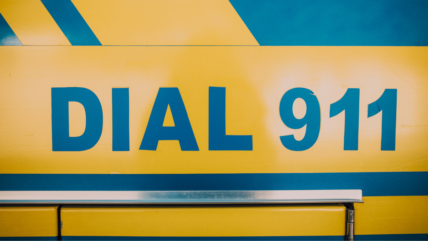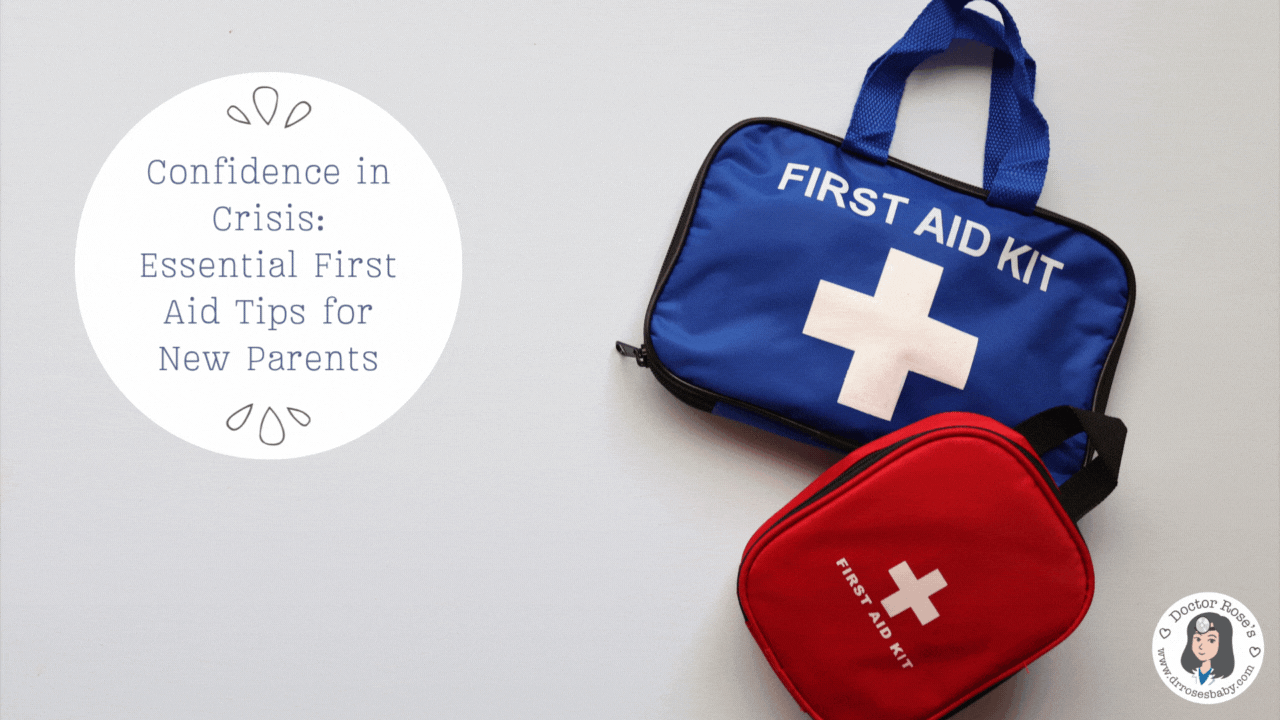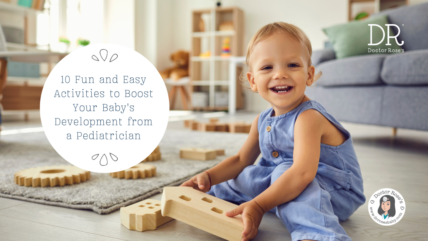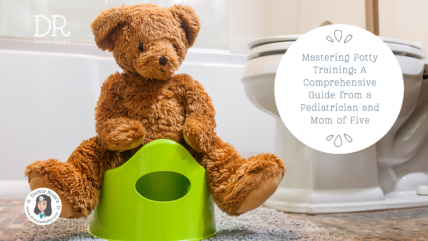Becoming a parent is a journey filled with joy, love, and endless learning opportunities. From the moment your precious baby arrives, your instincts kick in and your heart swells with a newfound sense of purpose. Amidst the incredible moments, there may also come instances of uncertainty and worry, especially when faced with a crisis situation involving your toddlers and babies. In these moments, maintaining a sense of calm is crucial, as it allows you to think clearly and make informed decisions that can potentially save the day. The AAP also recommends that all new parents take a first aid class. This will give you the knowledge and skills you need to handle common first aid emergencies at home.
Here are some essential first aid tips for new parents, according to the American Academy of Pediatrics (AAP):
Staying Calm: The Anchor in the Storm

Picture this: your toddler takes a tumble from a seemingly perilous height, or your baby suddenly starts choking on something. Panic begins to rise within you, but remember, staying calm is your greatest asset. By taking a few deep breaths and reminding yourself that you possess the knowledge to handle such situations, you’ll be better equipped to navigate the crisis at hand.
Immediate Action: When to Call 911

While many situations can be managed at home with the right knowledge, there are instances that demand immediate professional attention. Call 911 without hesitation if you notice any of the following:
-
Serious Injuries:
Whether it’s a fall from a significant height, a head injury, or a burn, any serious injury requires swift medical attention. -
Choking Emergency:
If your toddler or baby is choking and struggling to breathe, act promptly.
In some cases, first aid maneuvers might be needed to dislodge the object obstructing their airway.Here’s a step-by-step guide on what to do in such a situation:
-
-
Assess the Situation:
Quickly assess if your toddler or baby is able to cough, cry, or breathe.
If they’re able to make any sound, encourage them to cough forcefully, as this might help dislodge the object.
-
-
-
Back Blows for Infants:
If your baby is choking and unable to breathe, place them face-down on your forearm, with their head slightly lower than their chest.
Support their head and neck with your hand while keeping a firm grip on their lower jaw.
Deliver up to five gentle but firm back blows between their shoulder blades using the heel of your hand.
-
-
-
Chest Thrusts for Infants:
If back blows don’t dislodge the object, turn your baby face-up on your forearm, with their head slightly lower than their body.
Use two fingers placed at the center of their chest, just below the nipple line, and deliver up to five quick and forceful chest thrusts.
-
-
-
Heimlich Maneuver for Toddlers:
If your toddler is choking and can’t breathe, stand behind them and place your arms around their waist.
Make a fist with one hand and place the thumb side against the middle of their abdomen, slightly above the navel but below the ribcage.
Hold your fist with your other hand and give quick upward thrusts, as if you’re trying to lift them off the ground. Perform up to five thrusts.
-
-
-
Alternate Back Blows and Chest Thrusts:
If the object remains lodged and your child is still unable to breathe, alternate between back blows and chest thrusts until the object is dislodged or medical help arrives.
-
-
-
Call for Help:
If the choking persists, call for emergency medical assistance immediately.
Continue performing back blows, chest thrusts, or the Heimlich maneuver until help arrives.
-
-
-
It’s important to remain as composed as possible while providing aid.
If your child becomes unconscious, start CPR and follow the instructions provided by the emergency dispatcher until professional help arrives.
Keep in mind that these instructions are intended as general guidelines, and if you’re ever unsure or hesitant, it’s always better to seek medical help promptly.
-
Remember, staying informed and practicing these techniques through proper training can make a significant difference in handling choking emergencies involving your toddler or baby.
-
Seizure: Witnessing your child having a seizure can be terrifying, but knowing what steps to take can significantly aid in their safety. Here’s a comprehensive guide on what to do during a seizure as part of your first aid response:
-
-
Ensure Safety:
Gently guide your toddler or infant to the ground if they are not already lying down.
Clear the surrounding area of any sharp objects, furniture, or other potential hazards to prevent injury.
-
-
-
Time the Seizure:
Note the start time of the seizure.
If the seizure lasts for more than five minutes, or if your toddler or infant has another seizure immediately after the first, it’s time to seek medical help.
-
-
-
Protect Their Head:
Place a soft cushion or folded cloth under their head to protect it from hitting the ground.
-
-
-
Loosen Tight Clothing:
If your toddler or infant is wearing anything tight around their neck, such as a collar or tie, gently loosen or remove it to ensure proper airflow.
-
-
-
Position on the Side:
Turn your toddler or infant onto their side to help prevent choking.
This position also allows any fluids to drain from the mouth, reducing the risk of aspiration.
-
-
-
Do Not Hold Down:
Avoid trying to restrain your toddler or infant’s movements during the seizure.
Let the seizure run its course, as restraining them could cause injury.
-
-
-
Stay Close:
Keep a close eye on your toddler or infant throughout the seizure, and gently reassure them with a soothing voice.
This can be comforting once the seizure is over.
-
-
-
Observe Movements:
Take note of the type of movements during the seizure.
This information can be helpful for medical professionals in diagnosing and treating the condition.
-
-
-
After the Seizure:
Once the seizure ends, toddler or infant might be disoriented, tired, or confused.
Provide a calm and supportive environment. If needed, offer a soft pillow or blanket for comfort.
-
-
-
Seek Medical Attention:
If it’s your toddler or infant’s first seizure, or if the seizure was particularly long or severe, it’s advisable to contact a healthcare professional.
They can guide you on the appropriate steps to take.
-
-
-
Remember, each toddler or infant’s seizure experience can vary, and not all seizures require the same level of intervention.
It’s important to be informed and prepared, but always consult with a medical professional to ensure the best care for toddler or infant’s specific situation.
-
-
Difficulty Breathing:
Labored breathing or signs of respiratory distress in your toddler and infant should never be ignored, because they might indicate an underlying problem. -
Loss of Consciousness:
If your toddler or baby loses consciousness, it’s crucial to seek medical assistance immediately to determine the cause.
Everyday First Aid: Your Guide to Effective Responses

For situations that don’t require an emergency response, here are some essential first aid tips to keep in your parenting toolkit:
-
Managing Bleeding:
Accidents happen, and cuts are a common occurrence among active kids.
If your toddler or baby sustains a cut or scrape, apply gentle pressure with a clean cloth or bandage to control bleeding.
Elevating the injured area and maintaining pressure for around 10 minutes can help stop bleeding effectively. -
Alleviating Pain and Fever:
Toddlers and babies might occasionally develop minor pains or fevers.
Administering the right dose of acetaminophen (Tylenol) or ibuprofen (Advil) can provide them relief.
Be sure to adhere to the dosage instructions on the label and consult your pediatrician if you’re uncertain. -
Addressing Poisoning:
Accidental ingestion of poisonous substances is a common concern for parents.
If you suspect your toddler or baby has ingested something harmful, immediately contact the Poison Control Center at 1-800-222-1222.
They will provide guidance on how to handle the situation until professional help arrives.
The AAP also recommends that all new parents take a first aid class. This will give you the knowledge and skills you need to handle common first aid emergencies at home.
In conclusion, navigating parenthood is a journey full of wonderful moments and challenges alike.
As new parents, equipping yourselves with essential first aid knowledge empowers you to face crisis situations involving your toddlers, infants, and babies with confidence.
Remember, staying calm, seeking professional help when necessary.
Having a grasp of basic first aid techniques can make all the difference in ensuring your children’s safety and well-being.
As you continue on this beautiful journey of parenthood, let your love and preparedness be your guiding lights.
Parents dedication to learning and being prepared is a testament to commitment as caregivers or parents, nurturing little ones through every step of their remarkable growth.
Did you find this blog helpful? We’d love to hear your thoughts! Please take a moment to share your feedback in the comments section below.











Leave a Reply
You must be logged in to post a comment.